The Gift of South Dakota
Subscriptions to South Dakota Magazine make great gifts!
Subscribe today — 1 year (6 issues) is just $29!
Yankton Paid a Price
Oct 21, 2011
Would Yankton be the capital city of South Dakota today if our forefathers would have behaved themselves?
Of course, that’s water under the bridge. But this year marks the 150th observance of Yankton’s founding and the creation of our territorial government is a proper occasion to learn from the past. The truth is that we could have been a better capital city, and we paid a price.
First of all, we should have done the obvious things like investing in the construction of a governor’s mansion and a capitol building, and sharing the spoils with our potential opponents from the north and west.
We did the exact opposite. As I recall, the capitol building that we did build was eventually moved east of town and rehabbed into a chicken coop. Every governor had to build his own home, and most of them came from the South where they didn’t suffer our frost-freeze cycle, so all but one of their “mansions” were soon torn down. (The only one still standing, The Pennington House, now provides offices for our South Dakota Magazine at 3rd & Pearl.)
And as for spoils for the opponents? Gov. Pennington was a good man and probably one of the top territorial governors, but even he had his peccadilloes. For example, he created Pennington County, modestly had it named it for himself, and then proceeded to appoint his friends, rather than Black Hills leaders, to the county posts. Many of them didn’t even go West to serve — they handled the duties from Yankton.
Patronage was almost the order of the day, but there were far worse transgressions. Some of our Yankton streets (Burleigh and Picotte) now honor the names of early leaders who were the subject of numerous complaints about election irregularities, bribery and other forms of corruption.
Even the Yankton gang quarreled among themselves. There were rivalries and jealousies between businessmen on Broadway and Capitol streets, according to historian Herbert Schell’s fine book, The History of South Dakota.
Indian issues, railroad rights-of-way, the formation of counties and numerous other challenges faced the territorial legislature and the Yankton leaders. They muddled their way along, as governments usually do, but not many citizens in the sprawling Dakota Territory were impressed with their Yankton leadership.
The local gang knew of the growing dissension, but they felt they had an advantage because any re-organization of the territory had to occur within the city limits of Yankton. “Undaunted by such legal obstacles,” wrote Schell, “the nine members (of the capitol commission) secretly proceeded to Sioux City where in the early hours of April 3, 1883, they boarded a special train consisting of an engine and a single coach, and set out for the capital. As they reached the city limits at about six o’clock that morning, they halted the train briefly while they organized themselves. Then followed a junketing through the Territory by the ‘The Capital on Wheels,’ as the commission was nicknamed ….”
That midnight trip doomed Yankton as the state capital. We had it and we let it slip from our grasp — because of greed, self-interest and a frugal disinclination to make smart investments at the right moment.
I’m not suggesting that there are any lessons to be learned in this sad story. But you know what they say about history ….



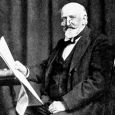
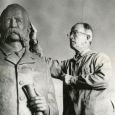
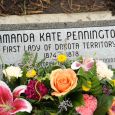
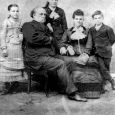
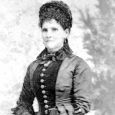



Comments